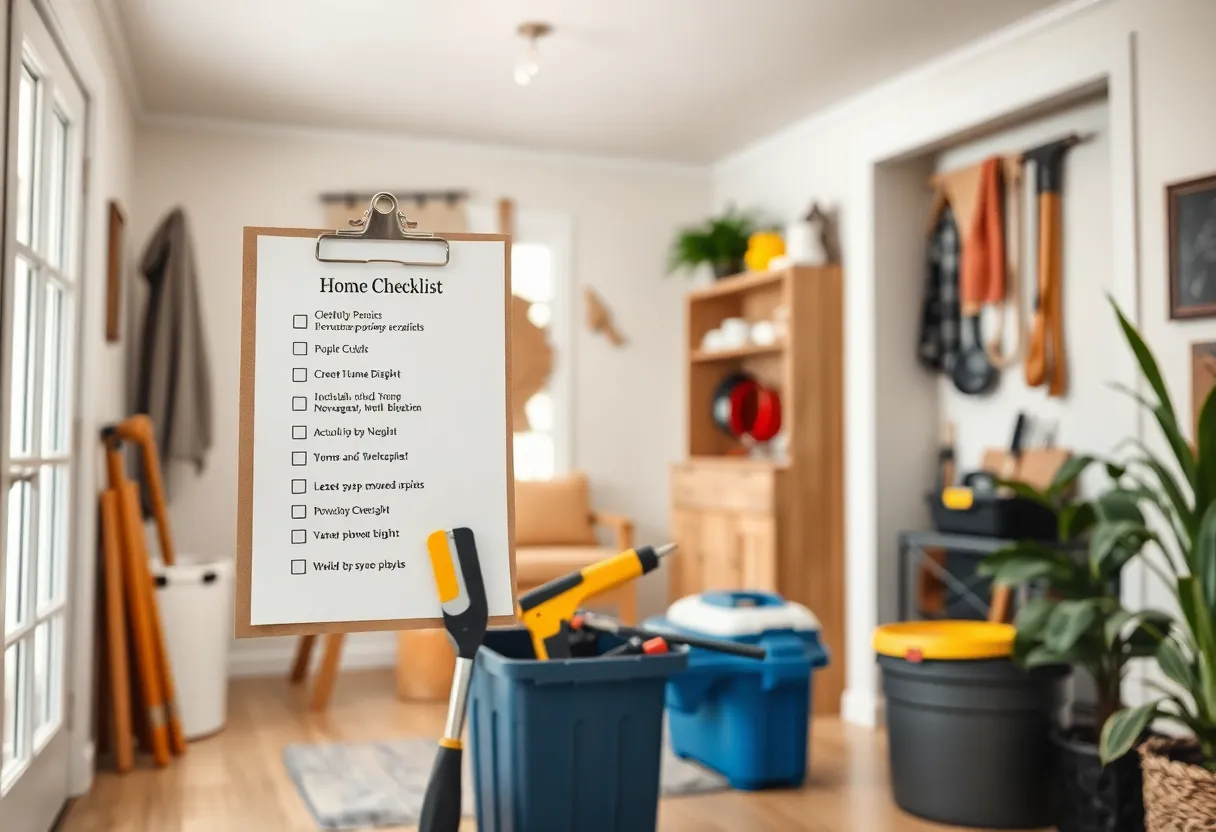How to Create a Home Repair Routine That Keeps Your Space Beautiful and Functional
A well-structured home repair routine serves as the cornerstone of maintaining a space that is both inviting and operational. Establishing consistent habits prevents minor issues from escalating into costly repairs, sustains aesthetic appeal, and ensures a safe living environment. This guide provides a comprehensive approach to designing an effective routine that prioritizes key tasks, optimizes time, and enhances home longevity.
Understanding the Importance of a Routine in Home Maintenance
Implementing a systematic repair schedule reduces unexpected breakdowns, minimizes repair costs, and preserves property value. Routine maintenance addresses small problems before they grow, preserving both the beauty and functionality of your residence.
Moreover, a regular routine fosters proactive oversight, making home management less burdensome in the long run. It shifts maintenance from crisis management to deliberate, preventative action.
Step 1: Conduct a Comprehensive Home Inspection
Initial Assessment
Begin by conducting a thorough assessment of your entire property. Document existing issues, identify recurring problems, and prioritize based on severity and impact.
Pay special attention to:
- Structural elements such as foundation, walls, and roof.
- Systems including electrical, plumbing, and HVAC.
- Cosmetic components like paint, flooring, and fixtures.
Use Checklists for Consistency
Create or download standardized checklists for different areas of your home. These tools ensure no item is overlooked, providing a clear framework for periodic inspection.
Step 2: Establish Routine Maintenance Tasks
Daily Tasks
- Quick cleanings — Wipe surfaces, tidy clutter, and address minor spills.
- Monitor appliances for signs of malfunction or leaks.
Weekly Tasks
- Deep cleaning of floors, bathrooms, and kitchens.
- Visual inspection of plumbing fixtures, electrical outlets, and visible structural elements.
- Garden care including watering, pruning, and removing debris.
Monthly Tasks
- HVAC filters replacement or cleaning.
- Checking for leaks and water damage around sinks, toilets, and appliances.
- Test smoke and carbon monoxide detectors.
Quarterly Tasks
- Inspect roofing for damage or debris build-up.
- Clean gutters and downspouts.
- Lubricate hinges, locks, and other moving parts.
Biannual Tasks
- Inspect foundation for cracks or shifts.
- Service HVAC systems for efficiency.
- Paint touch-ups or small repairs to prevent deterioration.
Annual Tasks
- Professional inspection of roofing, electrical wiring, and plumbing.
- Deep cleaning of carpets, upholstery, and ventilation systems.
- Exterior maintenance including sealing decks, power washing, and painting touch-ups.
Step 3: Prioritize & Schedule Tasks Effectively
Create a Maintenance Calendar
Integrate routine tasks into a calendar or digital planner. Assign specific weeks or months for each activity to prevent overlaps and ensure coverage.
Key tips include:
- Set reminders for recurring tasks.
- Adjust frequency based on seasonal changes or observed home needs.
- Reserve buffer days for unforeseen repairs.
Step 4: Adopt a Preventative Maintenance Mindset
Prevention focuses on reducing wear and tear and avoiding emergencies. Incorporate measures like sealing gaps, insulating pipes, and weatherproofing to prolong home components.
Preventative steps save money and time, and contribute significantly to maintaining a beautiful and functional environment.
Step 5: Maintain Records & Documentation
Keep detailed records of all inspections, repairs, and replacements. Use physical binders or digital tools to track:
- Dates of maintenance activities.
- Warranties and service providers.
- Notes on ongoing issues and future plans.
This documentation helps in budgeting, rescheduling, and evaluating the effectiveness of your routine.
Step 6: Build a Reliable Network of Professionals
Identify trustworthy contractors, electricians, plumbers, and inspectors. Establish relationships so that you can promptly address repairs requiring specialized skills.
Tip: Regularly review and update your list based on quality and reliability of service providers.
Step 7: Incorporate Seasonal Adjustments
Winter Preparation
- Insulate pipes to prevent freezing.
- Service heating systems.
- Check for drafts and seal gaps.
Summer Preparedness
- Clean and maintain air conditioning units.
- Inspect roofing and gutters for damage from storms.
- Maintain outdoor spaces to prevent overgrowth and pests.
Step 8: Use Tools & Technology to Streamline Maintenance
Leverage apps, remote sensors, and timers to automate or facilitate routine tasks:
- Smart thermostats for HVAC management.
- Maintenance apps for scheduling and reminders.
- Leak detectors and security cameras for proactive monitoring.
Automation increases consistency and reduces the risk of missing important tasks.
Step 9: Reassess & Adapt the Routine Periodically
Regularly review your maintenance plan to respond to changing home needs or new issues. Flexibility ensures the routine remains effective and aligned with your home’s lifecycle.
Annual reviews can identify inefficiencies, update task lists, or integrate new technology.
Conclusion
Creating a home repair routine is essential for preserving both the beauty and functionality of your space. Systematic inspections, scheduled tasks, preventive measures, and documentation form the foundation of effective home management. Flexibility and professional relationships further enhance the routine’s success.
By adhering to a structured approach, homeowners can enjoy a space that is safer, more comfortable, and retains its aesthetic value over time. Ultimately, a proactive routine saves money, reduces stress, and fosters pride in homeownership.
Author: STAFF HERE BALTIMORE WRITER
The BALTIMORE STAFF WRITER represents the experienced team at HEREBaltimore.com, your go-to source for actionable local news and information in Baltimore, Baltimore County, and beyond. Specializing in "news you can use," we cover essential topics like product reviews for personal and business needs, local business directories, politics, real estate trends, neighborhood insights, and state news affecting the area—with deep expertise drawn from years of dedicated reporting and strong community input, including local press releases and business updates. We deliver top reporting on high-value events such as the Baltimore Book Festival, Preakness Stakes, and Artscape. Our coverage extends to key organizations like the Baltimore Chamber of Commerce and Visit Baltimore, plus leading businesses in shipping and healthcare that power the local economy such as the Port of Baltimore and Johns Hopkins Medicine. As part of the broader HERE network, we provide comprehensive, credible insights into Maryland's dynamic landscape.





